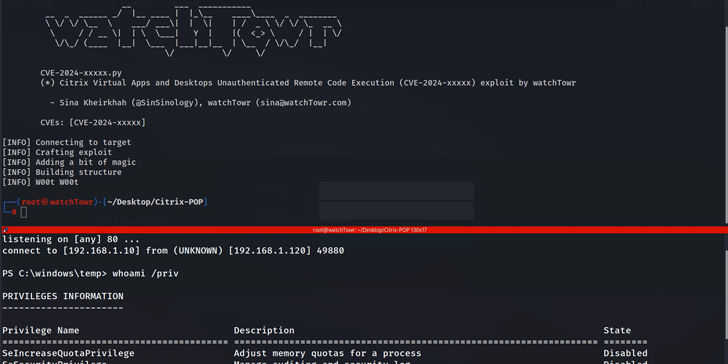Microsoft’s Swift Response to Critical Zero-Day Vulnerabilities: A New Wave of Exploits Targeting Global Infrastructure
In an urgent response to a series of newly discovered security vulnerabilities, Microsoft has rolled out a critical patch update aimed at closing several zero-day exploits actively being used by cybercriminals. These vulnerabilities, which impact a range of Microsoft products including Windows OS, Microsoft Office, and Exchange Server, represent a significant threat to global cybersecurity, with attackers already leveraging these flaws to infiltrate systems.
Unpacking the Zero-Day Vulnerabilities
The update primarily addresses a set of zero-day vulnerabilities, the most concerning of which is a remote code execution (RCE) flaw within the Windows Common Log File System (CLFS) driver. This specific vulnerability allows attackers to execute arbitrary code on the target system, potentially granting them complete control. Given that the CLFS driver is a critical component of the Windows operating system, this flaw has the potential to cause widespread damage if left unpatched.
Additionally, the patch addresses other critical vulnerabilities, such as privilege escalation issues in Exchange Server and memory corruption vulnerabilities in Microsoft Office. These flaws could be exploited to gain higher privileges on the system or to crash applications, leading to further security breaches.
Active Exploitation in the Wild: The Stakes Are High
What makes this situation particularly dire is the active exploitation of these vulnerabilities in the wild. According to Microsoft’s threat intelligence team, these exploits have already been used in targeted attacks against various sectors, including government agencies, critical infrastructure, and large enterprises. The exploitation appears to be part of coordinated campaigns by sophisticated threat actors, underlining the severity of the threat.
These attacks are not just hypothetical risks; they are real and ongoing. The attackers have been able to use these vulnerabilities to infiltrate systems, steal sensitive data, and potentially disrupt critical services. The fact that these flaws were being exploited before Microsoft had the chance to issue patches highlights the need for rapid response and constant vigilance in the face of emerging cyber threats.
Highlighted Vulnerabilities
Actively Exploited Zero-Days
- CVE-2024-38178 – Scripting Engine Memory Corruption Vulnerability
- Description: Affects the scripting engine in Internet Explorer mode in Microsoft Edge. Exploitation requires the user to click a malicious link.
- Risk: Remote code execution.
- Details: Disclosed by South Korean NCSC and AhnLab.
- CVE-2024-38193 – Windows Ancillary Function Driver for WinSock Elevation of Privilege
- Description: Allows attackers to gain SYSTEM privileges.
- Details: Discovered by Luigino Camastra and Milánek with Gen Digital.
- CVE-2024-38213 – Windows Mark of the Web Security Feature Bypass
- Description: Enables attackers to create files that bypass Windows security alerts.
- Details: Discovered by Peter Girnus of Trend Micro’s Zero Day Initiative.
- CVE-2024-38106 – Windows Kernel Elevation of Privilege
- Description: Provides SYSTEM privileges through a race condition.
- Details: Details on discovery not disclosed.
- CVE-2024-38107 – Windows Power Dependency Coordinator Elevation of Privilege
- Description: Grants SYSTEM privileges.
- Details: Details on discovery not disclosed.
- CVE-2024-38189 – Microsoft Project Remote Code Execution
- Description: Requires the victim to open a malicious Microsoft Office Project file with security features disabled.
- Details: Specific details on the exploitation vector not disclosed.
Publicly Disclosed Zero-Days
- CVE-2024-38199 – Windows Line Printer Daemon (LPD) Service Remote Code Execution
- Description: An unauthenticated attacker could execute remote code by sending a specially crafted print task.
- Details: Disclosure by an anonymous source.
- CVE-2024-21302 – Windows Secure Kernel Mode Elevation of Privilege
- Description: Exploited in Windows Downdate attacks to reintroduce old vulnerabilities.
- Details: Disclosed at Black Hat 2024 by SafeBreach researcher Alon Leviev.
- CVE-2024-38200 – Microsoft Office Spoofing Vulnerability
- Description: Exposes NTLM hashes through malicious file interactions.
- Details: Discovered by Jim Rush with PrivSec.
Unpatched Publicly Disclosed Zero-Day
- CVE-2024-38202 – Windows Update Stack Elevation of Privilege
- Description: Affects Windows Update Stack. Microsoft is developing a fix, but it is not yet available.
Additional Vulnerability Updates
- Windows Kernel-Mode Drivers vulnerabilities (CVE-2024-38187, CVE-2024-38191, etc.) affecting elevation of privilege.
- Windows Network Virtualization vulnerabilities (CVE-2024-38160, CVE-2024-38159) with critical remote code execution risks.
- Microsoft Edge (Chromium-based) vulnerabilities including CVE-2024-7536 (Type Confusion in V8) and CVE-2024-7550 (Out of bounds memory access in ANGLE).
- Azure Products including Azure Connected Machine Agent and Azure CycleCloud, with critical and important vulnerabilities.
- Microsoft Office updates addressing several remote code execution and elevation of privilege vulnerabilities.
Microsoft’s Multi-Faceted Response and Best Practices for Users
Microsoft’s quick action in releasing patches for all affected products is a crucial step in mitigating these threats. The company has issued a strong recommendation for all users—both individual and enterprise—to apply the patches immediately to prevent further exploitation.
However, simply applying the patches may not be enough. Microsoft also advises users to adopt a range of cybersecurity best practices to further protect their systems:
- Enable Automatic Updates: Ensuring that systems are set to update automatically can help mitigate the risk of unpatched vulnerabilities being exploited.
- Regular Security Audits: Conducting regular audits helps organizations identify potential weaknesses in their security posture and ensures that all patches have been correctly applied.
- Implement Multi-Factor Authentication (MFA): MFA adds an additional layer of security, making it significantly harder for attackers to gain unauthorized access even if they manage to exploit a vulnerability.
- Monitor Network Traffic for Anomalies: Utilizing intrusion detection and prevention systems (IDPS) to monitor network traffic can help detect unusual activities that may indicate an ongoing attack.
- Educate Employees on Cybersecurity Risks: Ensuring that all employees are aware of potential threats and know how to respond to them can significantly reduce the risk of a successful attack.
Conclusion: A Wake-Up Call for Cybersecurity Preparedness
This latest patch update from Microsoft serves as a stark reminder of the ever-present and evolving threats in the digital world. The active exploitation of these zero-day vulnerabilities underscores the importance of maintaining robust cybersecurity defenses and being prepared to respond to threats as they emerge.
As cyber threats become increasingly sophisticated, organizations and individuals alike must prioritize cybersecurity, not only by applying patches and updates promptly but also by implementing comprehensive security strategies that include regular audits, network monitoring, and user education.
For more detailed information on the patches and additional guidance on securing your systems, visit Microsoft’s official security update page or consult with cybersecurity professionals.



